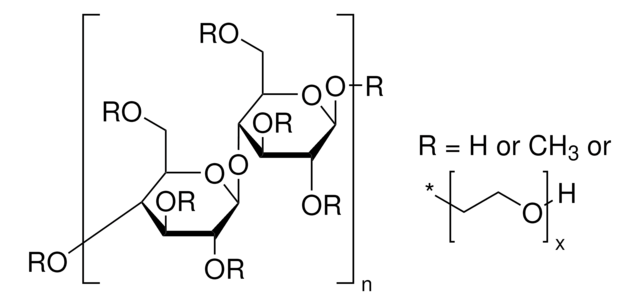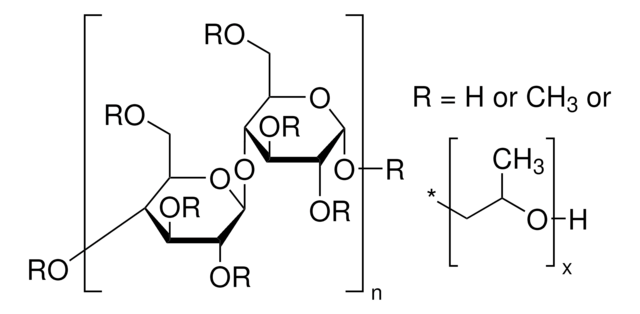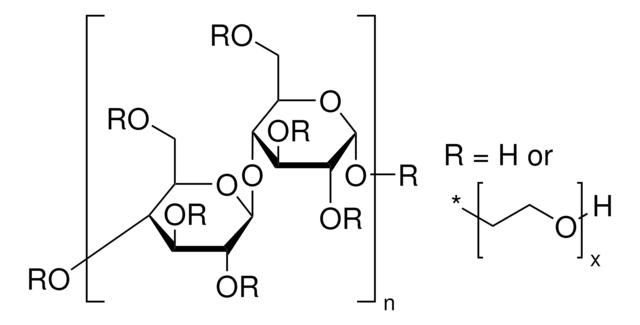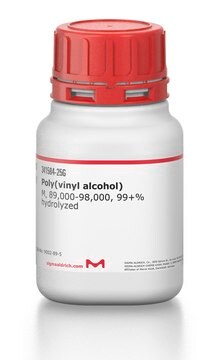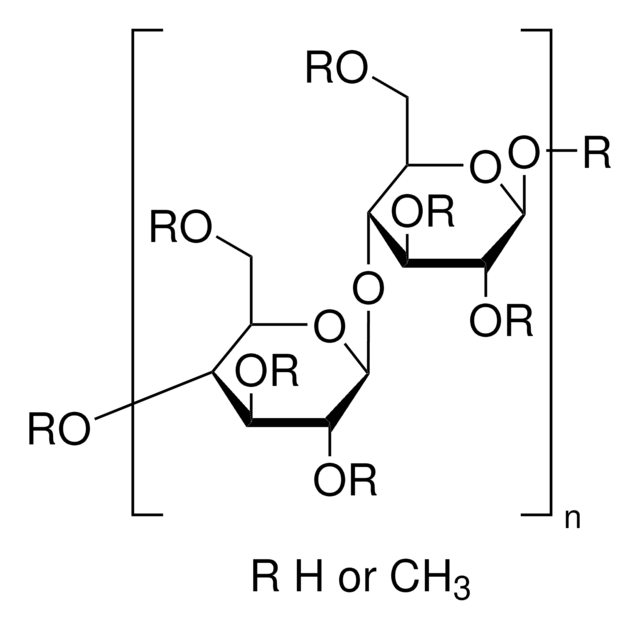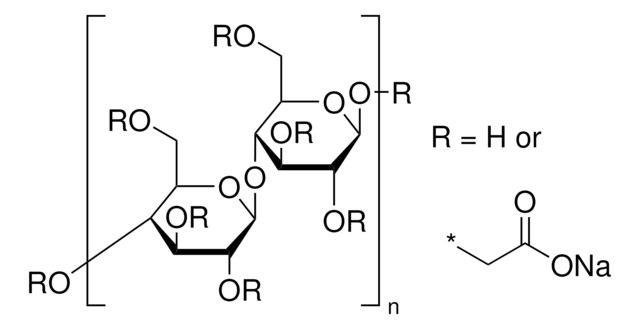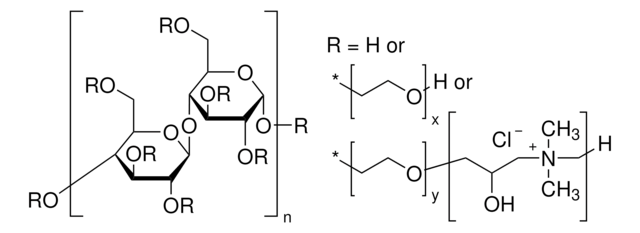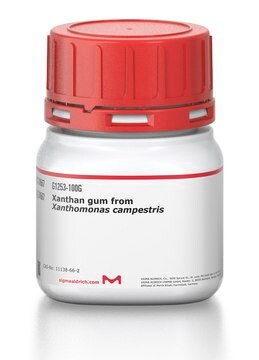Alle Fotos(1)
Wichtige Dokumente
93800
Tylose® MH 300
viscosity 150-450 mPa.s, 2 % in H2O(20 °C)
Synonym(e):
Methyl-2-hydroxyethylcellulose
Anmeldenzur Ansicht organisationsspezifischer und vertraglich vereinbarter Preise
Alle Fotos(1)
About This Item
Empfohlene Produkte
Form
powder
Qualitätsniveau
Farbe
white to faint beige
Viskosität
150-450 mPa.s, 2 % in H2O(20 °C)
Übergangstemp.
flocculation range 60-90 °C (0.5 wt. %)
Löslichkeit
H2O: soluble 20 mg/mL
Suchen Sie nach ähnlichen Produkten? Aufrufen Leitfaden zum Produktvergleich
Anwendung
Tylose® MH 300 and Tylose® MH 1000, methyl-hydroxyethyl cellose ethers (MHEC), are water-soluble non-ionic polymers used in materials to provide water retention, binding, thickening, film forming and colloid properties.
Sonstige Hinweise
To gain a comprehensive understanding of our extensive range of Polysaccharides for your research, we encourage you to visit our Carbohydrates Category page.
Rechtliche Hinweise
Tylose is a registered trademark of SE Tylose GmbH & Co. KG
Lagerklassenschlüssel
11 - Combustible Solids
WGK
WGK 1
Flammpunkt (°F)
Not applicable
Flammpunkt (°C)
Not applicable
Persönliche Schutzausrüstung
Eyeshields, Gloves, type N95 (US)
Hier finden Sie alle aktuellen Versionen:
Besitzen Sie dieses Produkt bereits?
In der Dokumentenbibliothek finden Sie die Dokumentation zu den Produkten, die Sie kürzlich erworben haben.
Kunden haben sich ebenfalls angesehen
Roland Adden et al.
Analytical chemistry, 78(4), 1146-1157 (2006-02-16)
Hydroxyethylmethyl celluloses (HEMC, DS(Me) 1.46-1.66, DS(HE) = 0.14-0.17) have been analyzed with respect to their methyl and hydroxyethyl pattern in the glucosyl units and along the polymer chain. Methyl groups were located by GLC/MS after direct hydrolysis, reduction, and acetylation
Su Jeong Ban et al.
Food and chemical toxicology : an international journal published for the British Industrial Biological Research Association, 50(5), 1716-1721 (2012-03-06)
The effect of hydroxyethyl methylcellulose (HEMC) with different viscosities on the glucose metabolism and antioxidative defense system in high fat-fed mice was investigated. The mice were randomly divided into five dietary groups: normal control diet (NC), high fat diet (HF)
Su Jeong Ban et al.
Food and chemical toxicology : an international journal published for the British Industrial Biological Research Association, 50(2), 130-134 (2011-11-01)
The effect of hydroxyethyl methylcellulose (HEMC), in comparison with hydroxypropyl methylcellulose (HPMC), on the body weight and lipid metabolism in mice fed with high fat diet was investigated. The animals were given normal control diet (NC group), high fat diet
S Zuleger et al.
International journal of pharmaceutics, 217(1-2), 139-152 (2001-04-09)
The present study deals with controlled drug delivery from hydrocolloid tablets by polymer particle erosion. The influence of excipients and formulation factors on the dissolution behaviour of the methyl hydroxyethyl cellulose (MHEC)-tablets is investigated. Linear drug release with low susceptibility
M G Lee
Journal of clinical and hospital pharmacy, 7(1), 67-70 (1982-03-01)
A method is reported for the analysis of prostaglandin PGE2 in methylhydroxyethylcellulose gel. Stability studies using the method have shown that the degradation of PGE in the gel is a first order process at 4 degrees and 25 degrees C.
Unser Team von Wissenschaftlern verfügt über Erfahrung in allen Forschungsbereichen einschließlich Life Science, Materialwissenschaften, chemischer Synthese, Chromatographie, Analytik und vielen mehr..
Setzen Sie sich mit dem technischen Dienst in Verbindung.